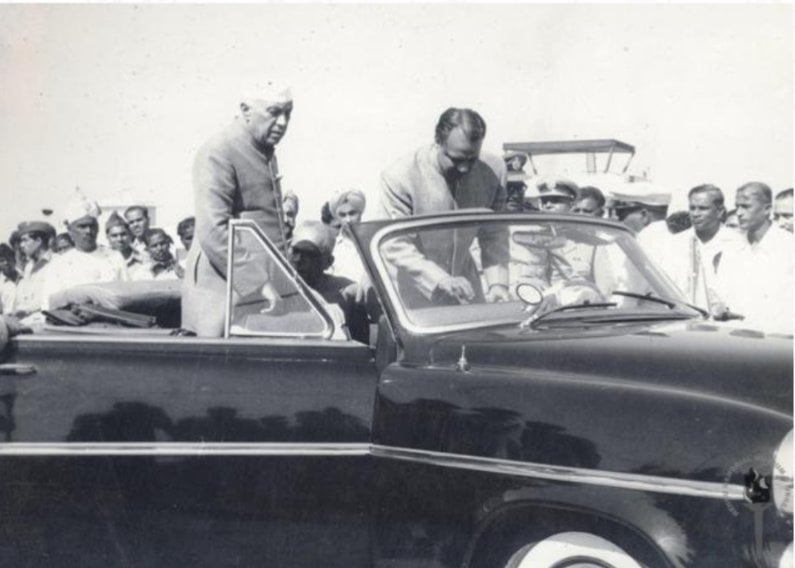Bhubaneswar: On Jawaharlal Nehru’s 132nd birth anniversary, which is also celebrated as Children’s Day, let’s recount his visits to Odisha.
It was on November 10, 1936, that Nehru visited Odisha for the first time. He was received by the then President of Ganjam District Congress Committee Dibakar Pattnaik before he embarked on a tour of undivided Ganjam, Puri and Cuttack district accompanied by Pandit Nilakantha Das and Bhagirathi Mahapatra, President and Secretary of Utkal Provincial Congress respectively. He reiterated the Congress demand for Purna Swaraj at a meeting organised in Berhampur and then addressed a big gathering in Cuttack town hall. He attended numerous meetings at Balugaon, Athagada, Aska, Bahugram, Jagatsinghpur, Salepur and Kendrapada.
He had exhorted people to join the ranks of Congress and support the party candidates during the elections.
Nehru’s second visit came after a lapse of 12 long years as the Prime Minister of Independent India. It was a significant trip for the state as he laid the foundation stone of two important projects. Accompanied by his niece Rita Pandit, a daughter of Vijayalaxmi Pandit, and B K Nehru, ICS, Secretary Works, Mines and Power, he landed at Jharsuguda aerodrome on April 12, 1948, and was received by Governor Kailash Nath Katju and Premier Dr H K Mahtab.
He travelled to Sambalpur by road to get an idea of the areas, which will be submerged by the proposed Hirakud Dam. He then laid the foundation of independent India’s first major river valley project at Hirakud which subsequently became the largest river valley project in the world.
Nehru said that the project would bring immense wealth not only to Odisha but to the entire country.
He flew to Bhubaneswar and at 10.20 am on April 13, 1948, laid the foundation stone of Odisha’s new capital Bhubaneswar.

“The laying of the foundation stone of this new city has been a task after my heart. Construction is always welcome. To build a city is something happy to think of. There could not be a greater joy than to create. It is almost god-like to create. To be associated, therefore, with the construction of the city has been a thing I appreciate most,” he said.
World-renowned German architect and urban planner Otto Koenigsberger prepared the city’s first master plan in 1948 for a population of 40,000.
Three years later on December 13, 1951, Nehru accompanied by his sister Vijayalaxmi Pandit reached Jharsuguda to a rousing welcome by Chief Minister Nabakrushna Choudhury and Utkal Congress President Biswanath Das.
In his speech, he referred to the oneness of our ancient country and her age-old secular principles. He also pointed out the evils of casteism and communalism.
While travelling to Sambalpur, he got down at a village and chatted with the children and reminded the people about Gandhiji’s emphasis on Village Industry.
He reviewed the construction work of the new capital in Bhubaneswar the following day and addressed a gathering of nearly one lakh people for long ninety-five minutes in Cuttack the same day.
Nehru boarded a special train to Berhampur from Bhubaneswar on his next Odisha visit (May 8, 1955). This time he was accompanied by his daughter Indira Gandhi. He visited Khallikote College and held discussions with Acharya Vinoba Bhave for an hour on the premises. In the evening, he addressed a large gathering at the Courtpeta grounds.
Nehru stayed at Berhampur for two more days and participated in the deliberations of the Working Committee of the Congress.
His fifth visit to Odisha was on January 13, 1957, to inaugurate the Hirakud Project. He said that Odisha, a land of temples now had a new temple and in it a god for the whole country.
Nehru inaugurated the Rourkela Steel Plant, which was the 1st public sector steel plant of India, during his next visit on March 28, 1961. His flight landed at Rourkela airstrip, where he was given a rousing reception by a large crowd. In his inaugural speech, Nehru said that the steel plant had not only enriched Odisha but also enriched India.
On January 3, 1962, Nehru inaugurated Paradeep Port, the deepest seaport of our country. The same day, he inaugurated the 49th session of the Indian Science Congress on the premises of Ravenshaw College. The Prime Minister reminded the audience of the glory of the ancient Kalingans who braved the stormy sea and settled in the South Asian Countries.

His last visit to Odisha was in January 1964 when he was again accompanied by his daughter Indira Gandhi. He arrived in Bhubaneswar by chopper on January 5 from Tikarapada, where he had laid the foundation stones of a multipurpose dam across the river Mahanadi and Talcher Thermal Power Station.
He attended the colourful ceremony of the 68th session of the Indian National Congress at Gopabandhu Nagar, Bhubaneswar, the following day. After speaking for two minutes, he suddenly felt very tired and weak following a rise in blood pressure. he was confined to bed at Raj Bhawan for six days.
Nehru left Bhubaneswar on January 12, not to return again as he breathed his last on May 31.
Also Read: When Odisha Doctor Treated Nehru After Mild Stroke In Bhubaneswar
His last message to the people of Odisha was, “Yours is a small state, but you have a big heart.”
(With inputs from http://magazines.odisha.gov.in/)
PC: Twitter


